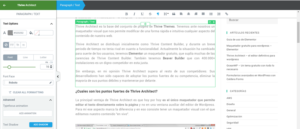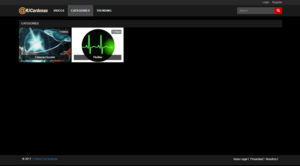Once WordPress is installed, it is time to adapt it to what we need by configuring its visual aspect to turn our webpage into a useful tool in which to achieve our goals. We have two tools at our disposal to take on this task with:
Plugins
Plugins allow to add all types of new functionalities. There are thousands of them in WordPress’ official repository, which we can install with a couple of clicks directly from our administrator panel. The first answer we tend to find when looking for a way to do something in WordPress is: “There’s a plugin for that” and it’s usually true. This might seem like a huge advantage at first, but it might easily become an issue.

Every installed plugin increases resource consumption and slows our server down; besides, it may include extra functionalities we don’t need, all of this without going into choosing other viable options. For example, Woocommerce needs 256MB of memory (WordPress can work with 40MB), but we need it if we want to run a store online. However, if we don’t sell physical products, Easy Digital Downloads can be a more convenient option since it avoids the hassle related to delivery management. This is a simple example, with not many variables.
In other cases such as optimization, security, generating and managing content, creating forms, interacting with third-party service and a long etcetera it’s much more difficult to choose the right plugin given the great amount of competing plugins available.
Themes
Themes allow us to change the visual aspect of our web. They’re usually referred to as “templates” or “designs”, although a WordPress theme is much more than that since they also allow to incorporate all sorts of functionalities, acting much like a plugin in this regard. In other words, a theme can be considered a combination of “template + plugin”.
So, if a theme can add functionalities to WordPress, what do we need plugins for then? The answer is simple, if we separate functionalities from visual aspect, we can “update” our web very easily (akin to reforming the house, we don’t need to build it from the ground up).
On the other hand, if we make our design around the functionalities we wish to have, we generally obtain a much more efficient result, much alike to a development to measure. This is usually the case with themes oriented to niche functionalities, for instance real-estate market or restaurants. In some cases these themes can include the implementation of these functionalities through their own or from third-party plugins. When installing a theme, we are installing and configuring these themes as a part of the precess, which saves time and effort.
Which plugin and/or theme should I install?
There isn’t valid answer for each individual case, everything depends on what our goals are. I follow a basic rule, install the least amount of necessary components to achieve the desired functionalities.
Even though there exist numerous analysis and comparisons, choosing the highest-rated plugins out of each category doesn’t guarantee a good choice, they may not even be compatible with one another. In any case, these comparisons can serve as a good starting point to meet our goals.
In following entries, I’ll be going over the modules I normally use and the reasons why I’ve made those choices.
Free or paid modules?
There’s a general consensus regarding this aspect which tends towards paid modules, however, is it worth paying for a module when we can obtain the same functionality for free? The answer, as always, depends on our necessities and capabilities.
If we find an adequate free module, nothing stops us from using it. We only need to consider that these modules are offered as-is, without warranties and limited support if any. The need for support is one of the reasons why the tendency leans towards paid versions.
Usually, paid versions offer more functionalites, which in my opinion is a secondary factor, since we are based on the paid version offering everything we need, nothing else. However, it’s common to pay extra for updates, and this is an important matter. It’s imperative to keep our software updated so as to be protected from errors and known vulnerabilites, as well as gaining access to new features introduced in each version. This makes another reason why the balance shifts towards paid modules.
The final point to consider is that the author of the free module can abandon the project at any given time. This is less likely to happen in paid modules with a stream of clients which motivate and fund their project.
Taking all of this into account, the most common solution is to find ourselves using both free and paid modules in our website.





I Appreciate This Work Amazing Post For Us I Like It.
Thank you for your comment!
It is an incentive to improve my content